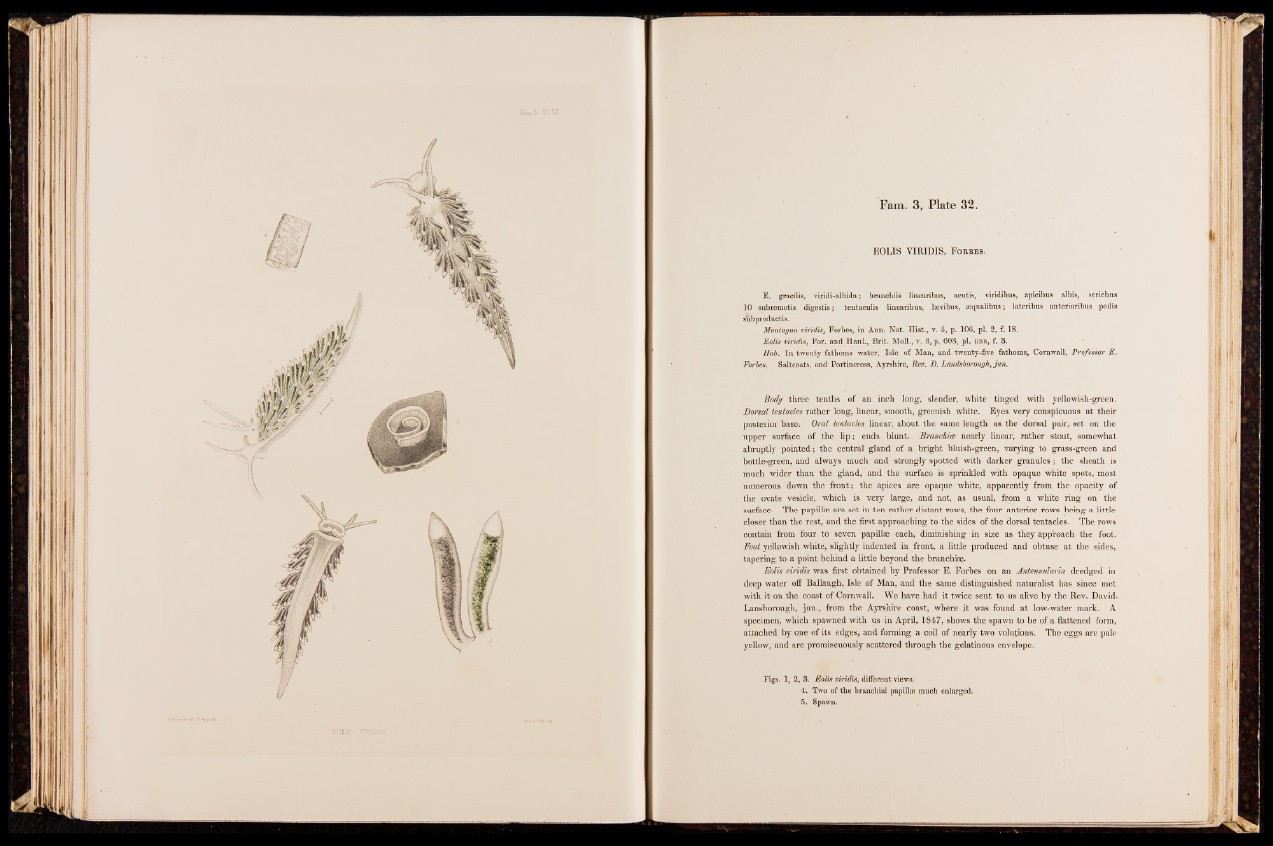
EOLIS VIRIDIS, Forbes.
E. gracilis, viridi-albida; branchiis linearibus, acutis, viridibus, apicibus albis, seriebus
10 subremotis digestis; tentaculis linearibus, lsevibus, sequalibus; lateribus anterioribus pedis
subproductis.
Montagna viridis, Forbes, in Ann. Nat. Hist., v. 5, p. 106, pi. 2, f. 18.
Eolis viridis, For. and Hanl., Brit. Moll., v. 3, p. 603, pi. bbb, f. 3.
Hab. In twenty fathoms water, Isle of Man, and twenty-five fathoms, Cornwall, Professor E.
Forbes. Saltcoats, and Portincross, Ayrshire, Rev. D. Landsborough, jun.
Body three tenths of an inch long, slender, white tinged with yellowish-green.
Dorsal tentacles rather long, linear, smooth, greenish white. Eyes very conspicuous at their
posterior base. Oral tentacles linear, about the same length as the dorsal pair, set on the
upper surface of the lip; ends blunt. Branchiae nearly linear, rather stout, somewhat
abruptly pointed; the central gland of a bright bluish-green, varying to grass-green and
bottle-green, and always much and strongly spotted with darker granules; the sheath is
much wider than the gland, and the surface is sprinkled with opaque white spots, most
numerous down the front; the apices are opaque white, apparently from the opacity of
the ovate vesicle, which is very large, and not, as usual, fyom a white ring on the
surface. The papillae are set in ten rather distant rows, the four anterior rows being a little
closer than the rest, and the first approaching to the sides of the dorsal tentacles. The rows
contain from four to seven papillae each, diminishing in size as they approach the foot.
Foot yellowish white, slightly indented in front, a little produced and obtuse at the sides,
tapering to a point behind a little beyond the branchiae.
Eolis viridis was first obtained by Professor E. Forbes on an Antennularia dredged in
deep water off Ballaugh, Isle of Man, and the same distinguished naturalist has since met
with it on the coast of Cornwall. We have had it twice sent to us alive by the Rev. David.
Lansborough, jun., from the Ayrshire coast, where it was found at low-water mark. A
specimen, which spawned with us in April, 1847, shows the spawn to be of a flattened form,
attached by one of its edges, and forming a coil of nearly two volutions. The eggs are pale
yellow, and are promiscuously scattered through the gelatinous envelope.
Figs. 1, 2, 3. Eolis viridis, different views.
4. Two of the branchial papillæ much enlarged.
5. Spawn.